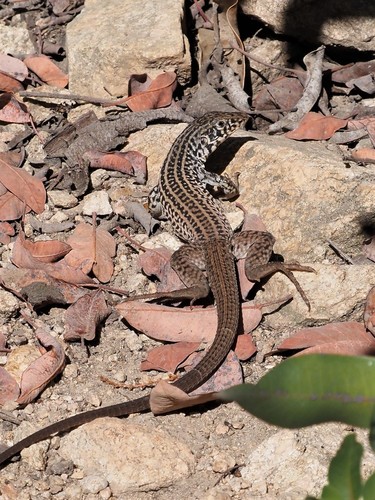
Western Whiptail
Aspidoscelis tigris, or the Western Whiptail, is a strikingly patterned lizard adapted to desert life. With its bold stripes and remarkable speed, it plays a crucial role in controlling insect populations, showcasing nature's adaptability and diversity.
5 years
Lifespan
Least Concern
Conservation Status
Stable
Population Trend
Distribution Range of the Western Whiptail
Aspidoscelis tigris, commonly known as the Western whiptail lizard, is native to the southwestern United States and northern Mexico. Its geographical distribution includes states such as California, Nevada, Utah, Arizona, New Mexico, Colorado, and extends into the northern parts of Baja California and Sonora in Mexico.
Western Whiptail's Habitat
Environmental Conditions
The Western whiptail lizard typically inhabits arid and semi-arid regions. They are commonly found in desert scrubs, open woodlands, grasslands, and chaparral environments. These areas generally experience hot and dry climate conditions with sparse vegetation.
Ecological Niche
Aspidoscelis tigris is a diurnal species, primarily active during the day when it forages for food. It feeds on a variety of invertebrates, including insects and spiders, playing an essential role in controlling insect populations. The species prefers environments where it can hide under rocks, sparse vegetation, or in burrows to escape predators and extreme temperatures.
Copyright @ Nature Style Limited. All Rights Reserved.
 English
English